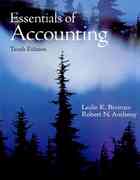Question
Consider a drug offender who is on probation and regularly monitored for drug use. He is deciding whether to take a hit and receive an
Consider a drug offender who is on probation and regularly monitored for drug use. He
is deciding whether to take a hit and receive an immediate instantaneous utility of h = 1,
knowing that he will be punished with certainty for violating the terms of his probation.
The criminal justice system would like to deter drug use, and is contemplating two options
for punishing probation violators. Option one: give violators a short jail sentence of jsdays
immediately, yielding a utility of jsimmediately. Option two: give violators a long jail
sentence of jldays in the future, yielding a utility of jlat the beginning of the sentence
(i.e. all of the utility impact of the sentence is felt in a lump sum at the beginning of the
sentence).
The offender's utility is zero if he neither takes a hit nor serves any jail time.
(a) Assume drug offenders are exponential discounters (i.e. = 1) with 1. Let
js= 1.01 and jl= 2, to be served a month in the future.
(i) What is the largest monthly discount factor msuch that the short jail sentence
successfully deters drug use while the long jail sentence does not?
(ii) What is the largest yearly discount factor ywhere this condition holds? [Hint:
since a month is 1
12 of a year, the yearly discount factor is a simple function of
the monthly discount factor.]
(b) Now assume drug offenders are quasi-hyperbolic discounters with beta 1 and y=
0.99. If js= 1.01 and jl= 2 is to be served a month in the future, what is the largest
such that the immediate short jail sentence successfully deters drug use while the
delayed long jail sentence does not?
(c) Consider an exponential discounter with yearly discount factor, y, found in part (a).
(i) Would a massive sentence of jl= 20,000 starting two years from now be effective
at deterring drug use?
(ii) Compare the effectiveness of the massive sentence to the effectiveness of a 1.01-
day sentence served immediately, which you determined in part (a). Explain the
psychological intuition for the similarities or differences between the effectiveness
of these two punishments.
(d) Consider the quasi-hyperbolic discounter, with = 0.99 and the found in part (b).
(i) Will the massive delayed sentence deter drug use?
(ii) Compare your answer to your answer from part (c). Explain the psychological
intuition for the similarities or differences between these answers.
Step by Step Solution
There are 3 Steps involved in it
Step: 1

Get Instant Access to Expert-Tailored Solutions
See step-by-step solutions with expert insights and AI powered tools for academic success
Step: 2

Step: 3

Ace Your Homework with AI
Get the answers you need in no time with our AI-driven, step-by-step assistance
Get Started


